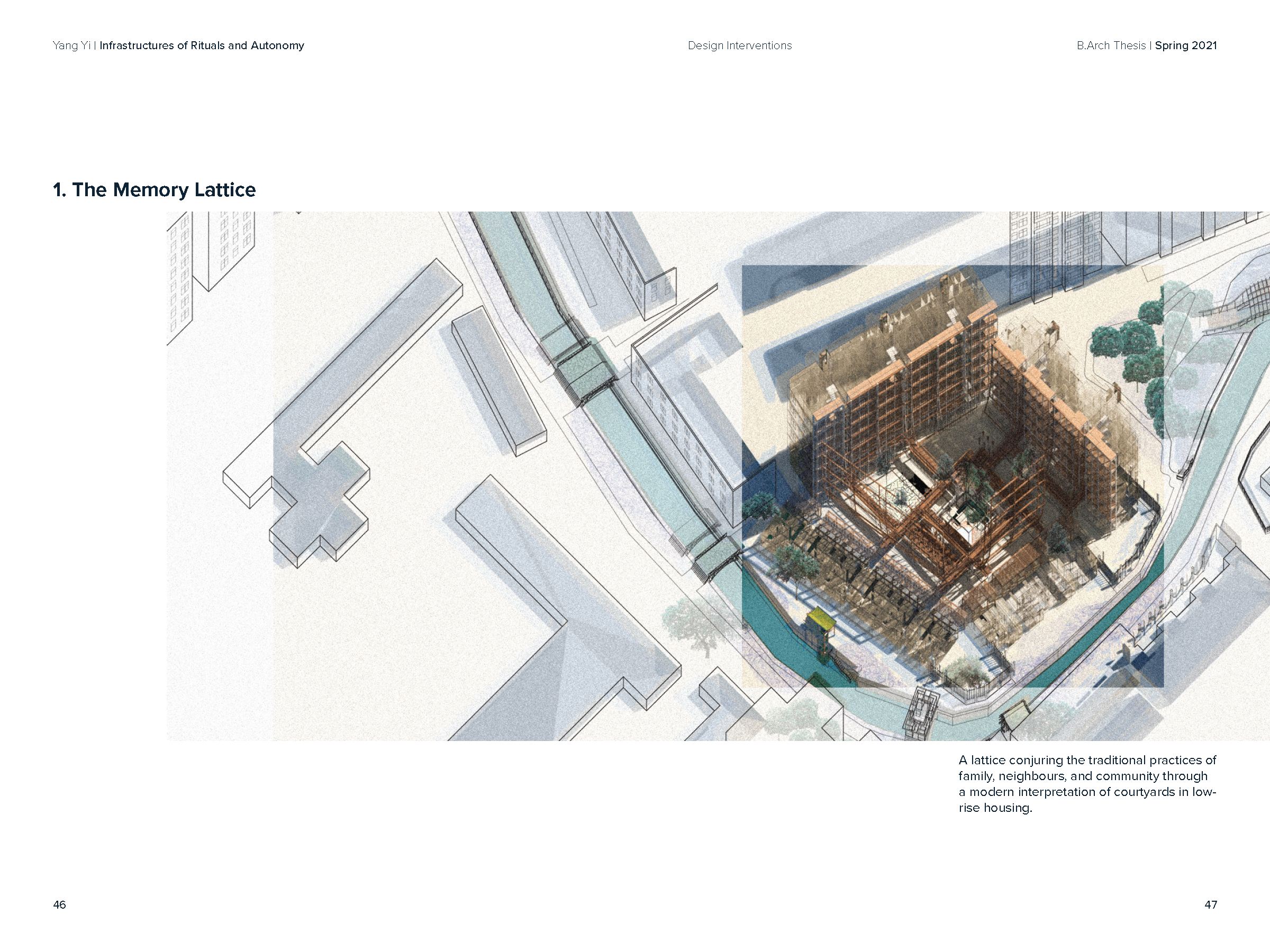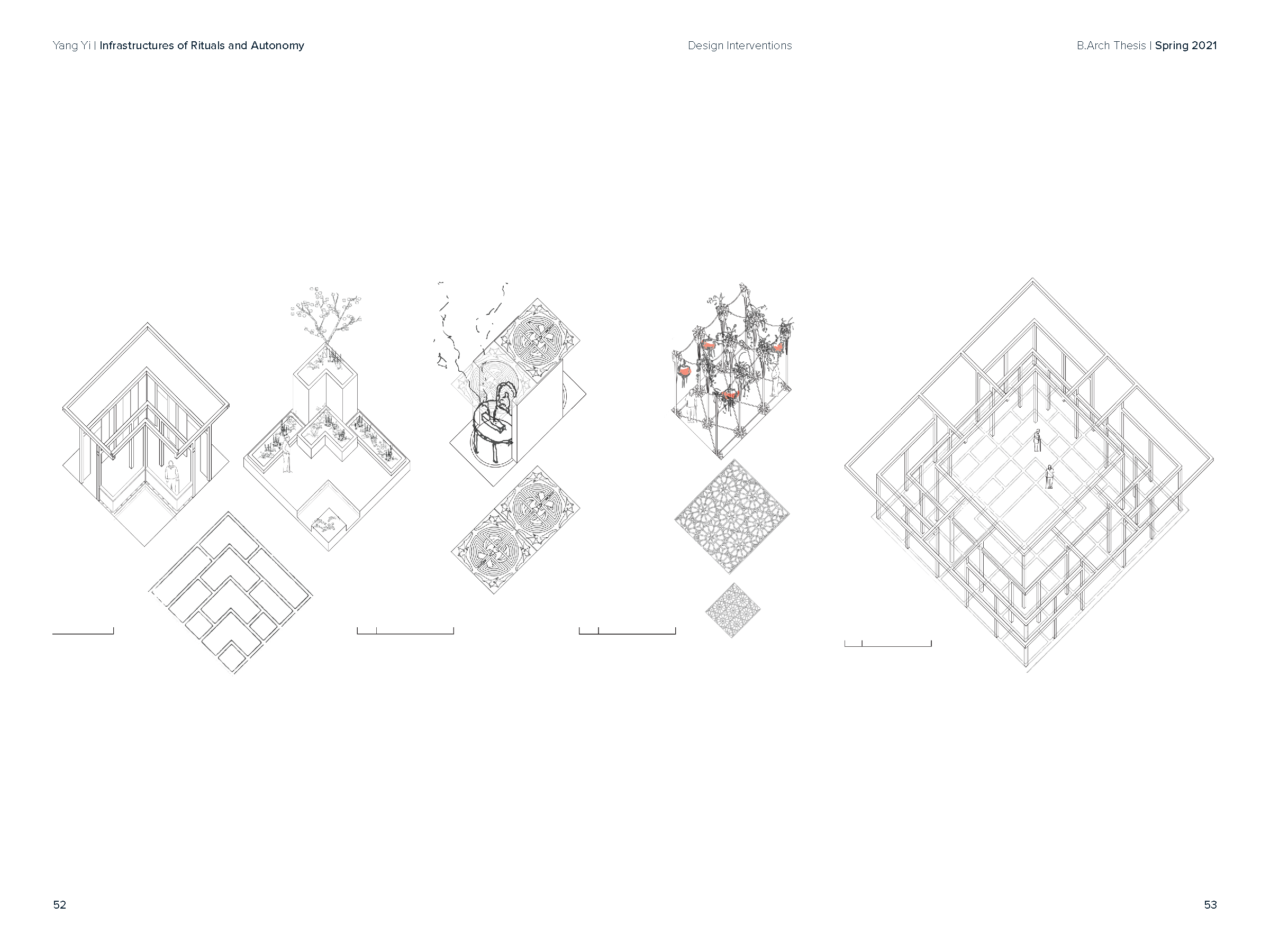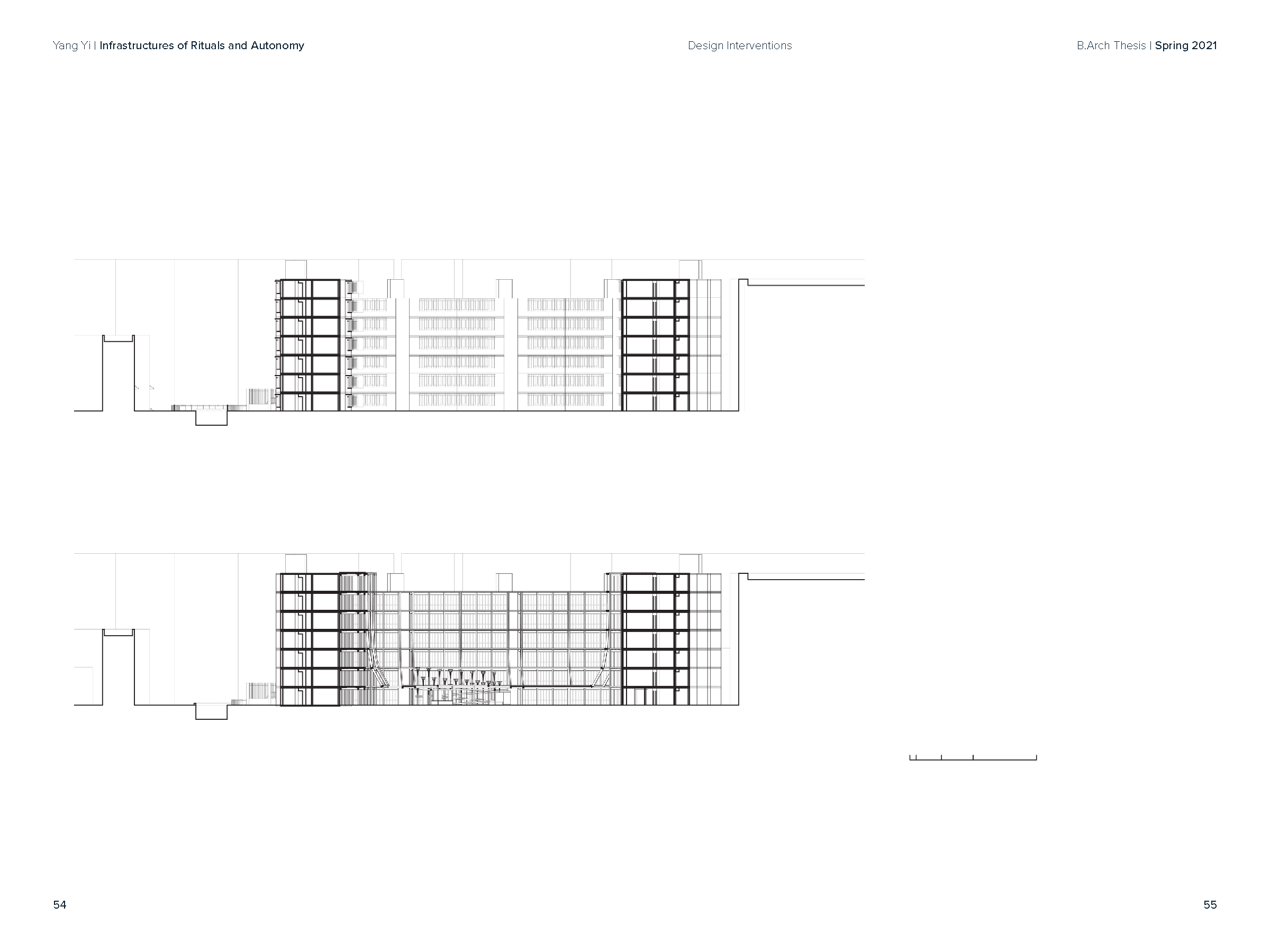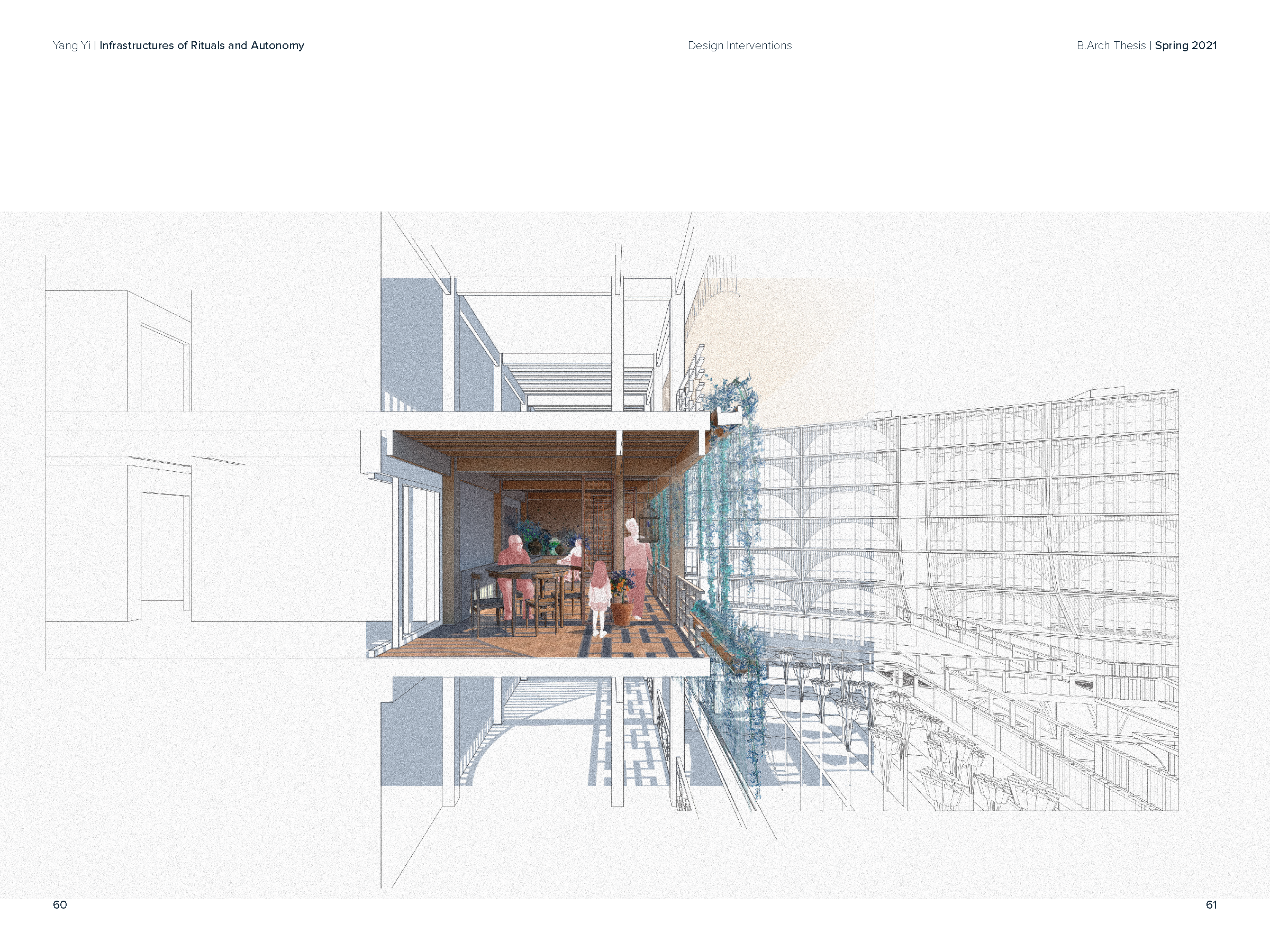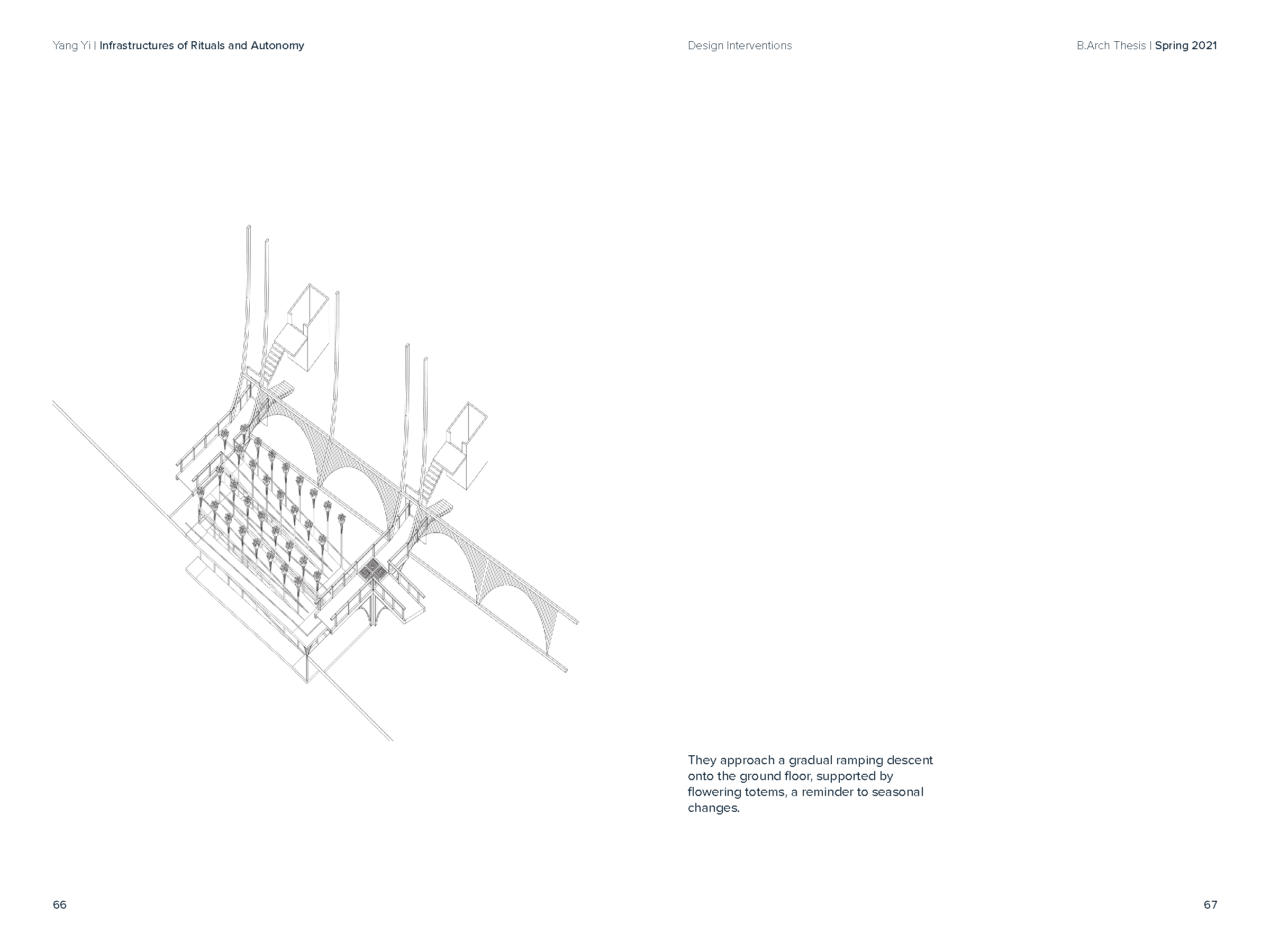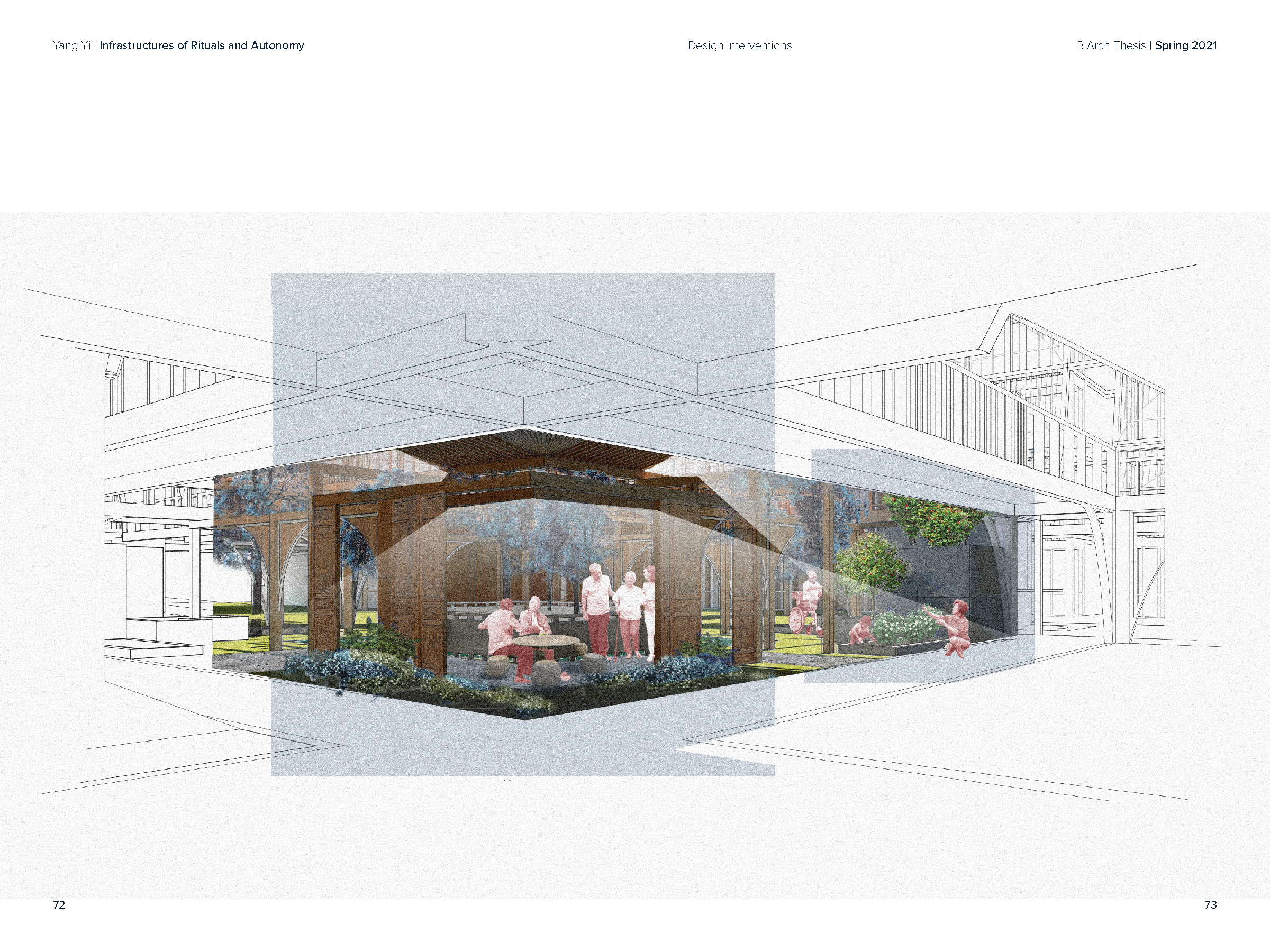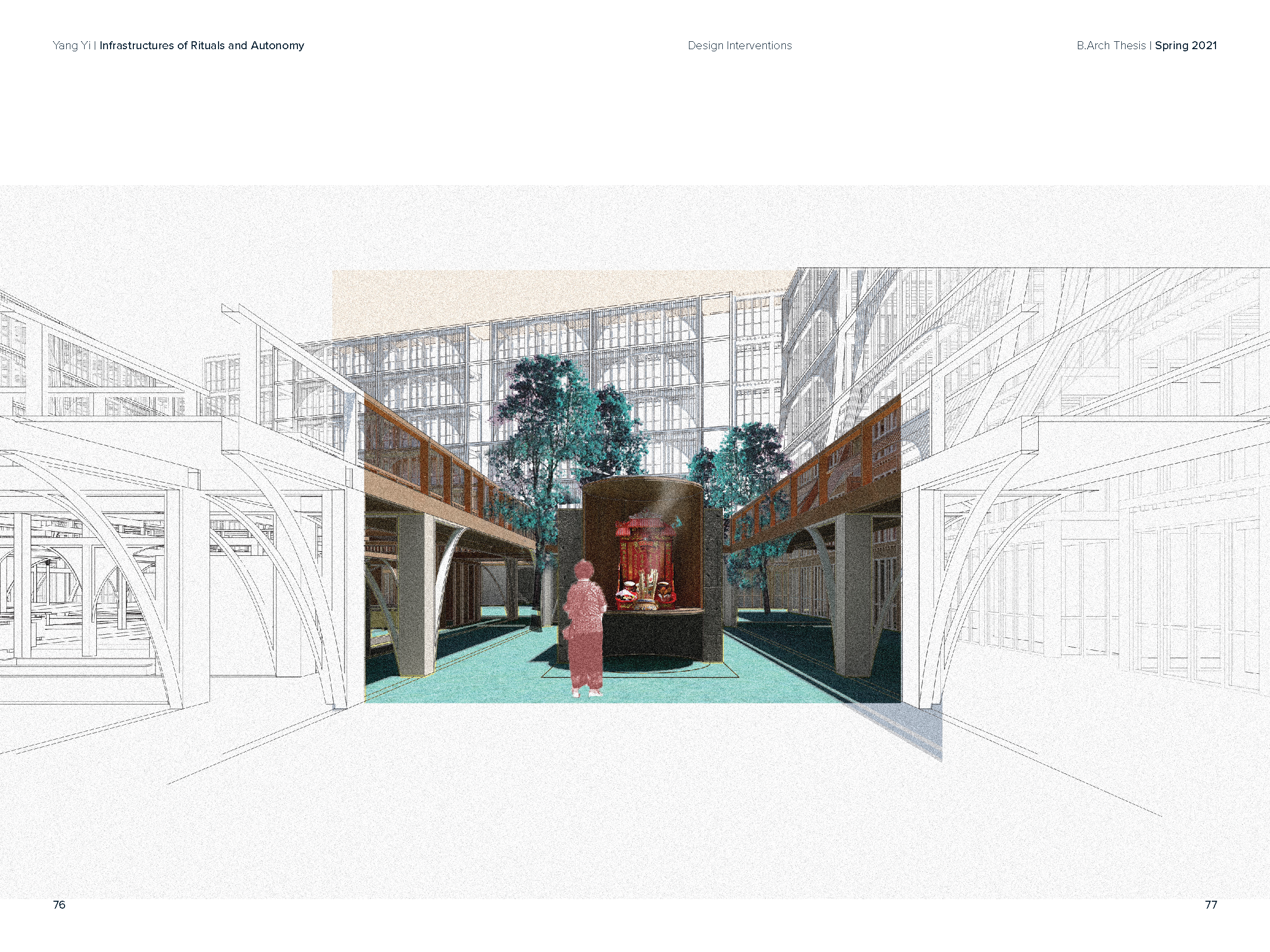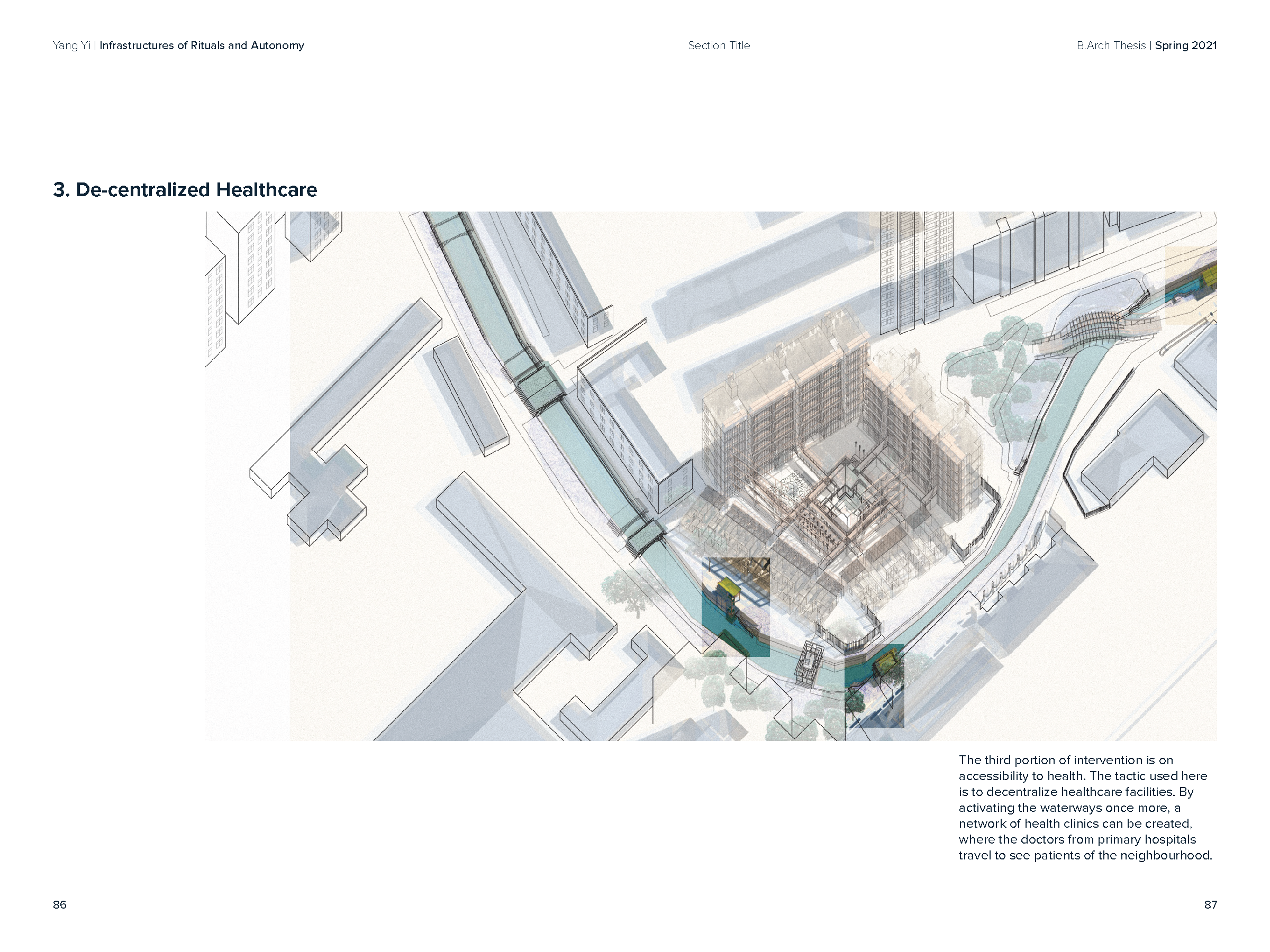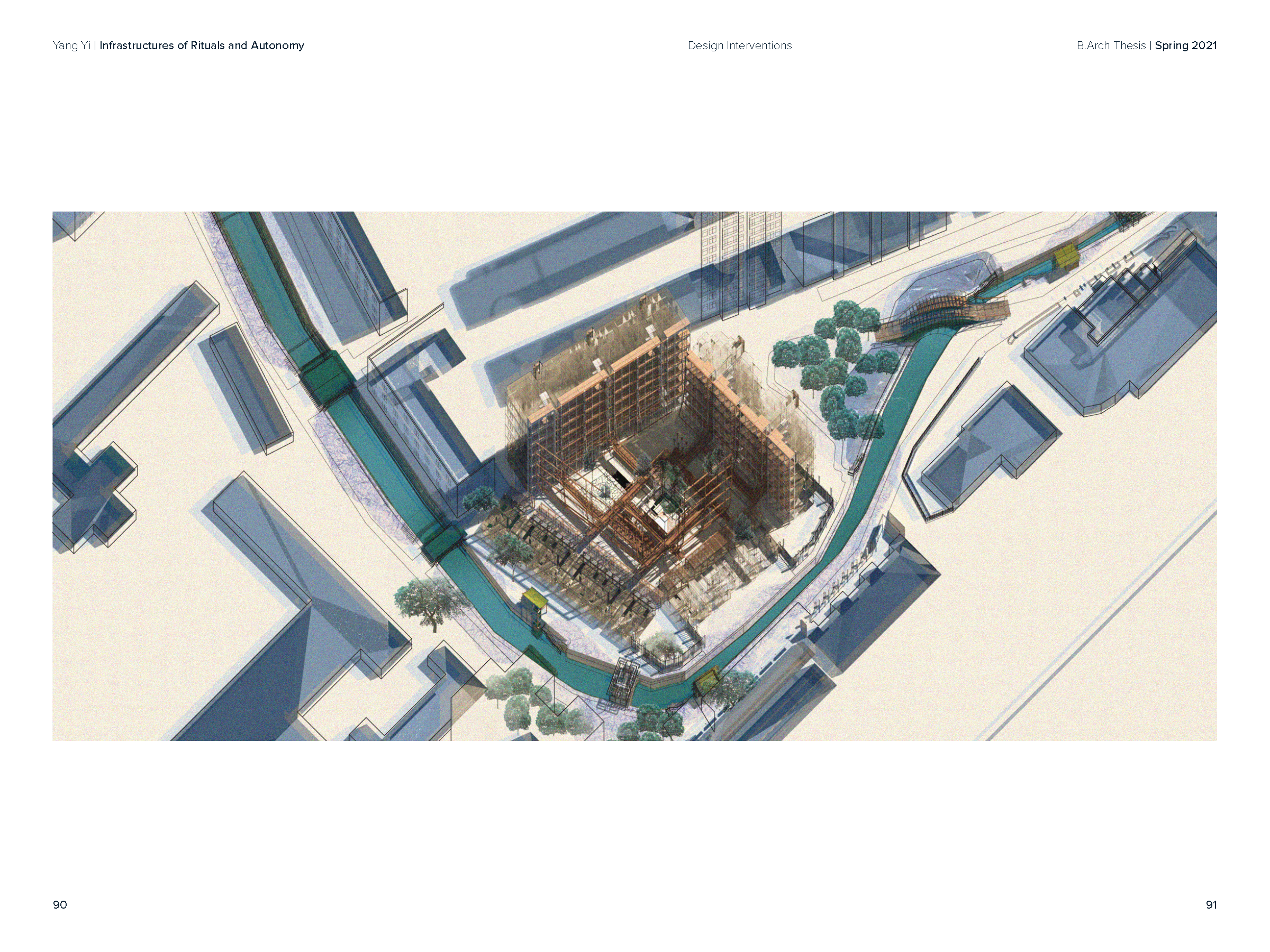
How do we mitigate social isolation for older persons in Chinese urban cities?
︎Category | Architecture
︎Type | Thesis (Honorable Mention)
︎Time | 10 weeks
︎Type | Thesis (Honorable Mention)
︎Time | 10 weeks
Observational Research, Adaptive Reuse, Urban Space Design
︎
Why?
Aging is a universal and constant aspect in our lives. Yet, only when our body fails us gradually with compounding disabilities do we discern the shift from an active to passive lifestyle. As the UN projects 366-million older adults in China by 2050, the critical question is: in what environment will the Chinese elders grow old? Densely-populated cities have inadequate senior homes, while their elderly face the difficulty of growing old in an unfamiliar environment, displaced from their original homes.
Alternatively, new research recommends the adoption of aging-in-place, an autonomous lifestyle at home supported by technology, policy, and architectural advances. By conducting a study of elderly daily rituals in Kunming, this thesis hypothesizes urban infrastructures that support aging-in-place.
Aging Demographic Timeline of China

Aging Demographic Map of China
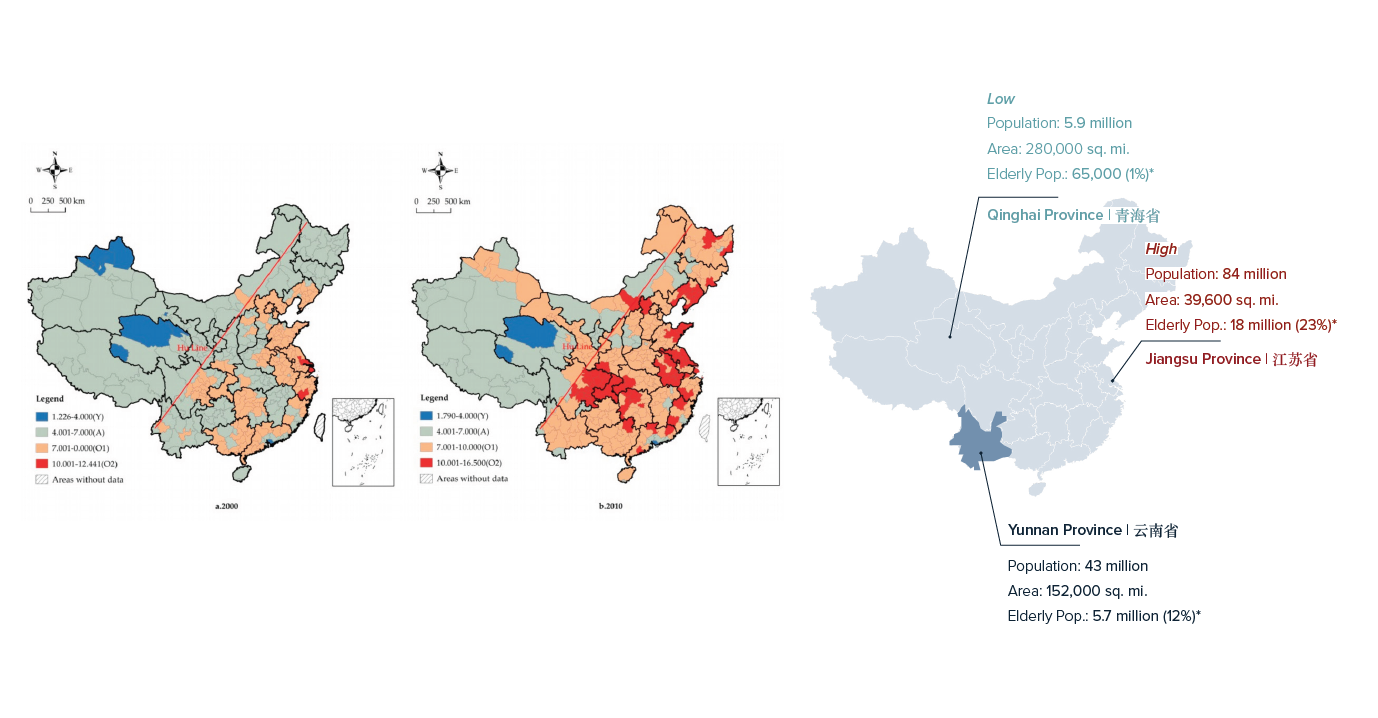
Radius of Physical mobility & Social interaction Over Lifetime

︎
How?
︎ Site Macro Analysis
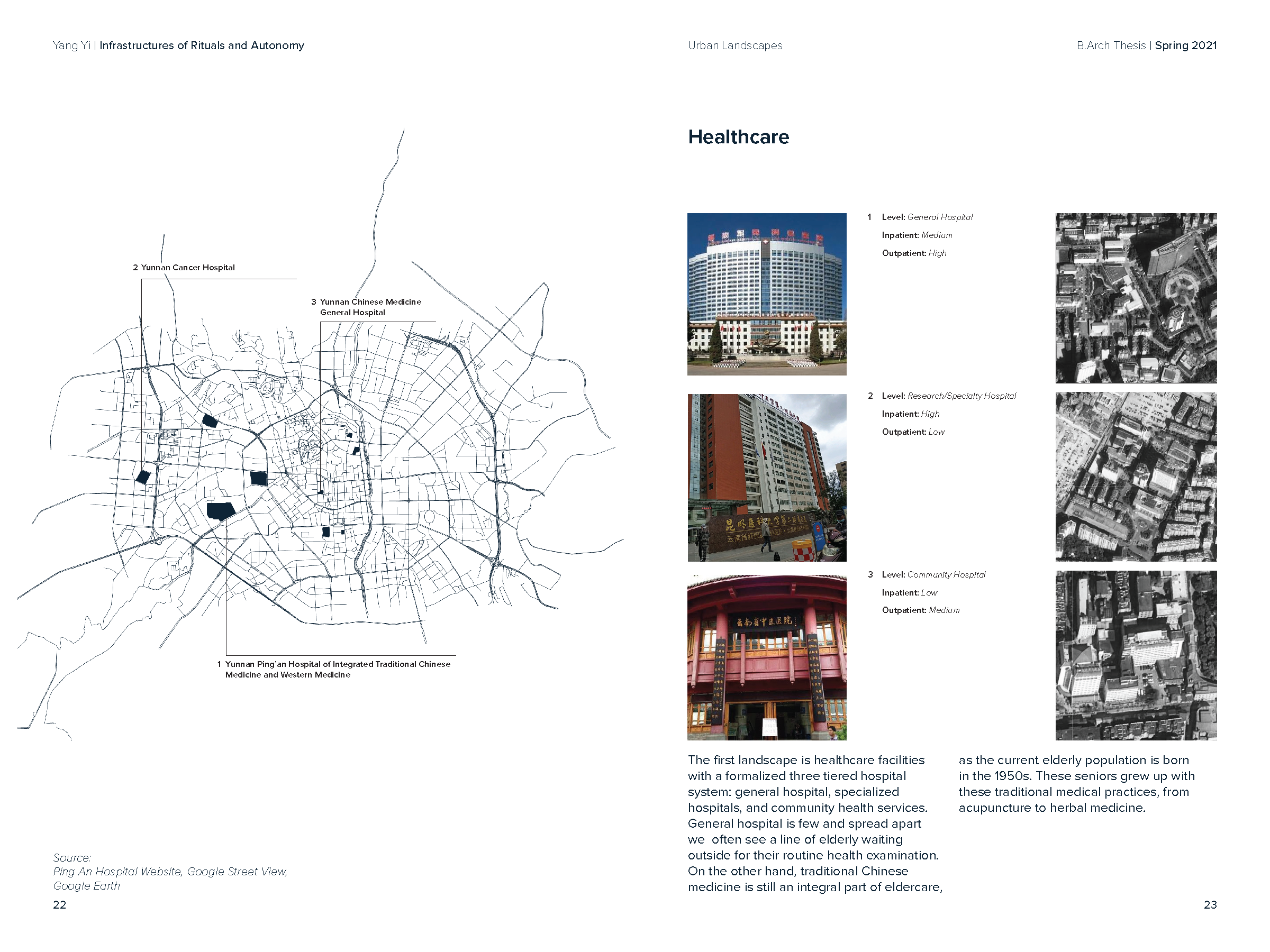
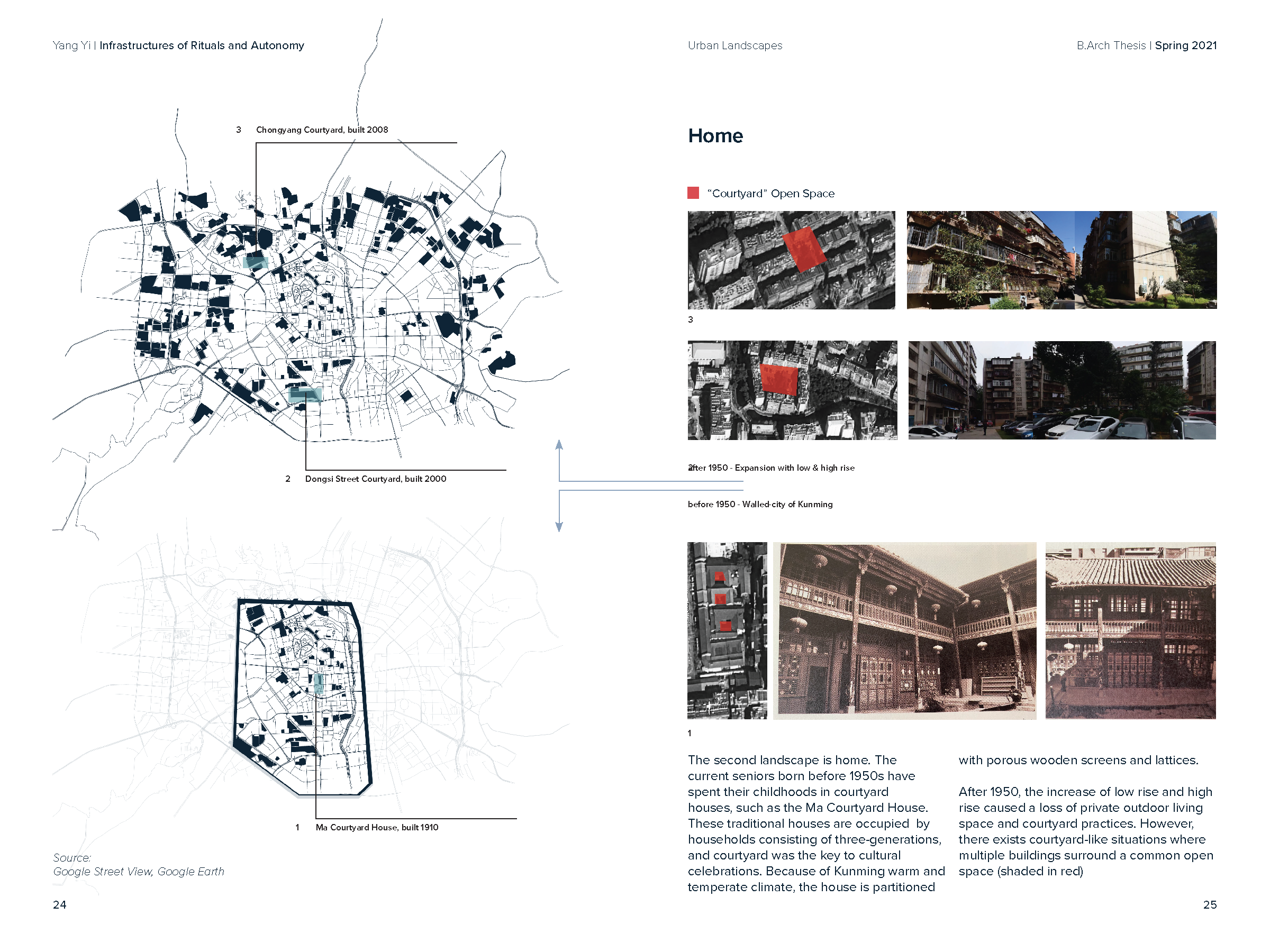
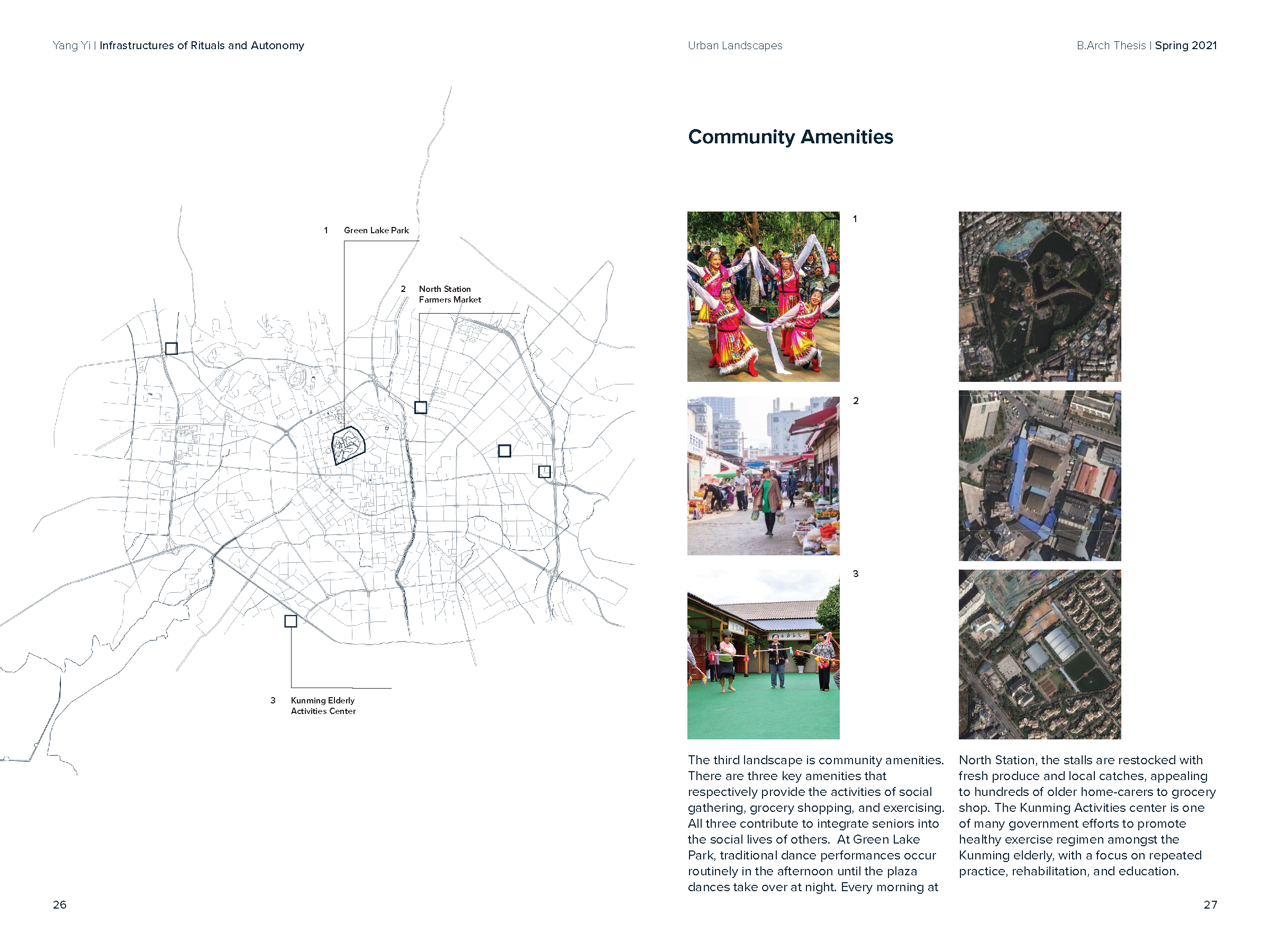

︎ Site Micro Analysis


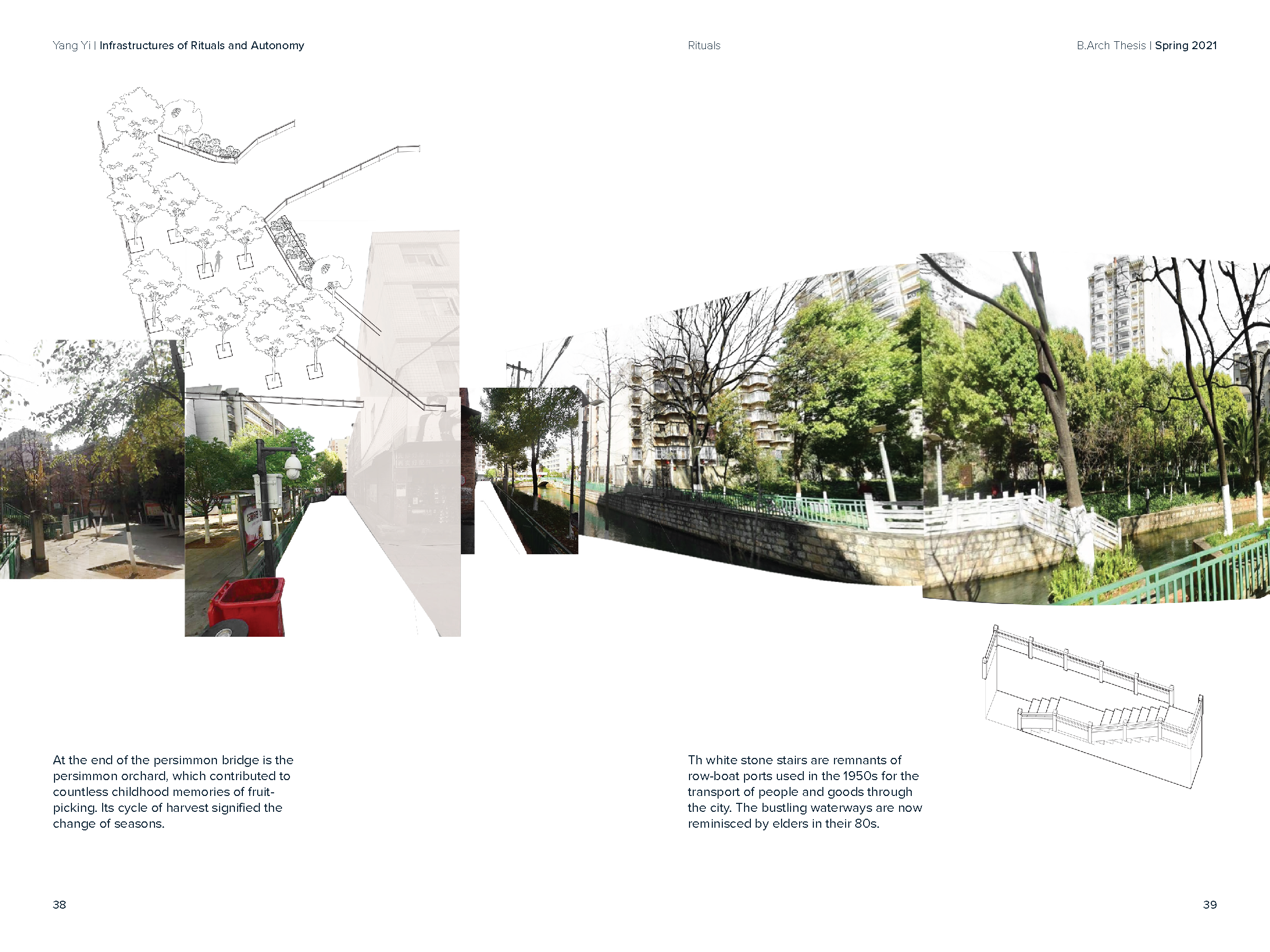
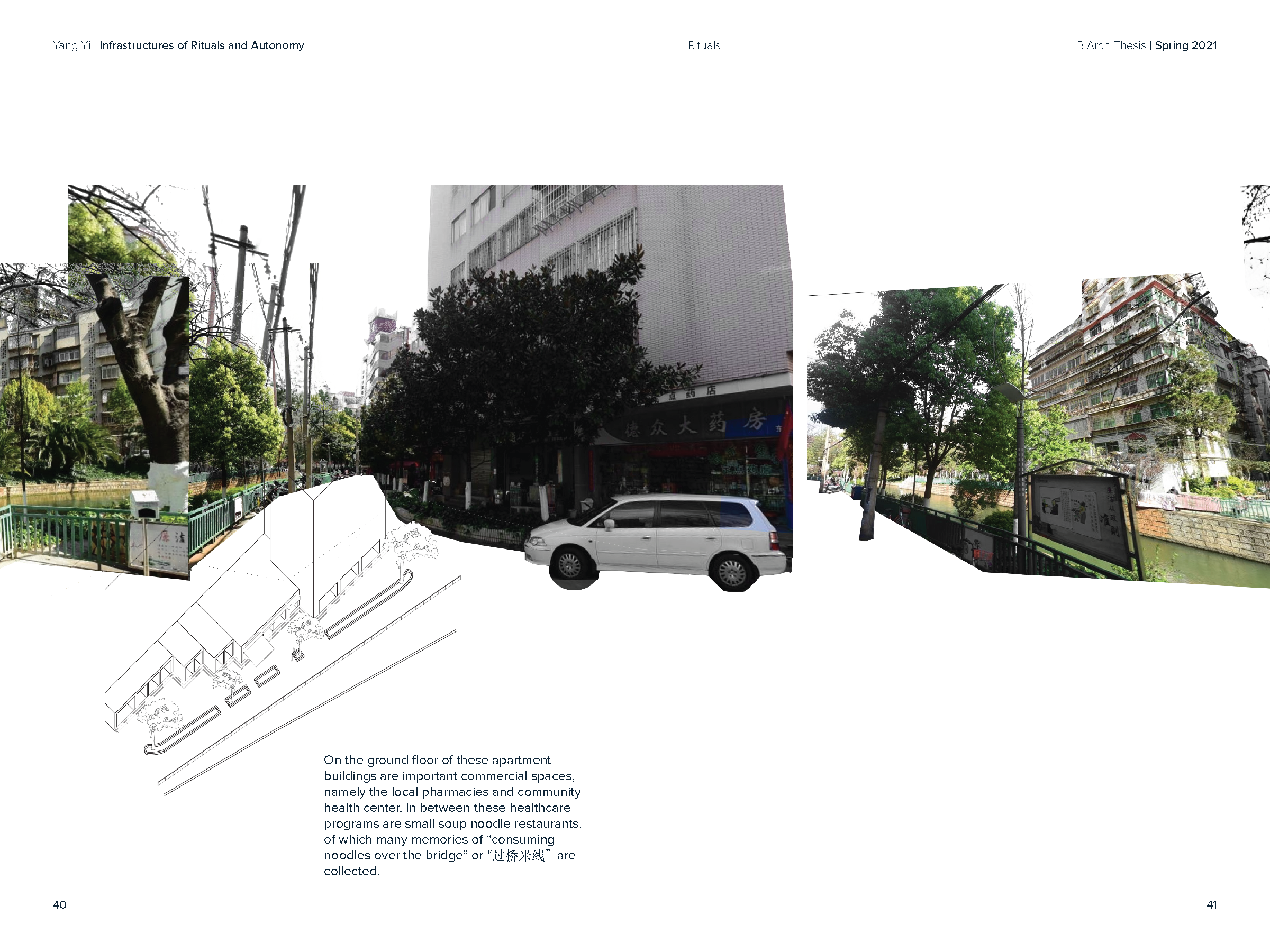

︎
What?
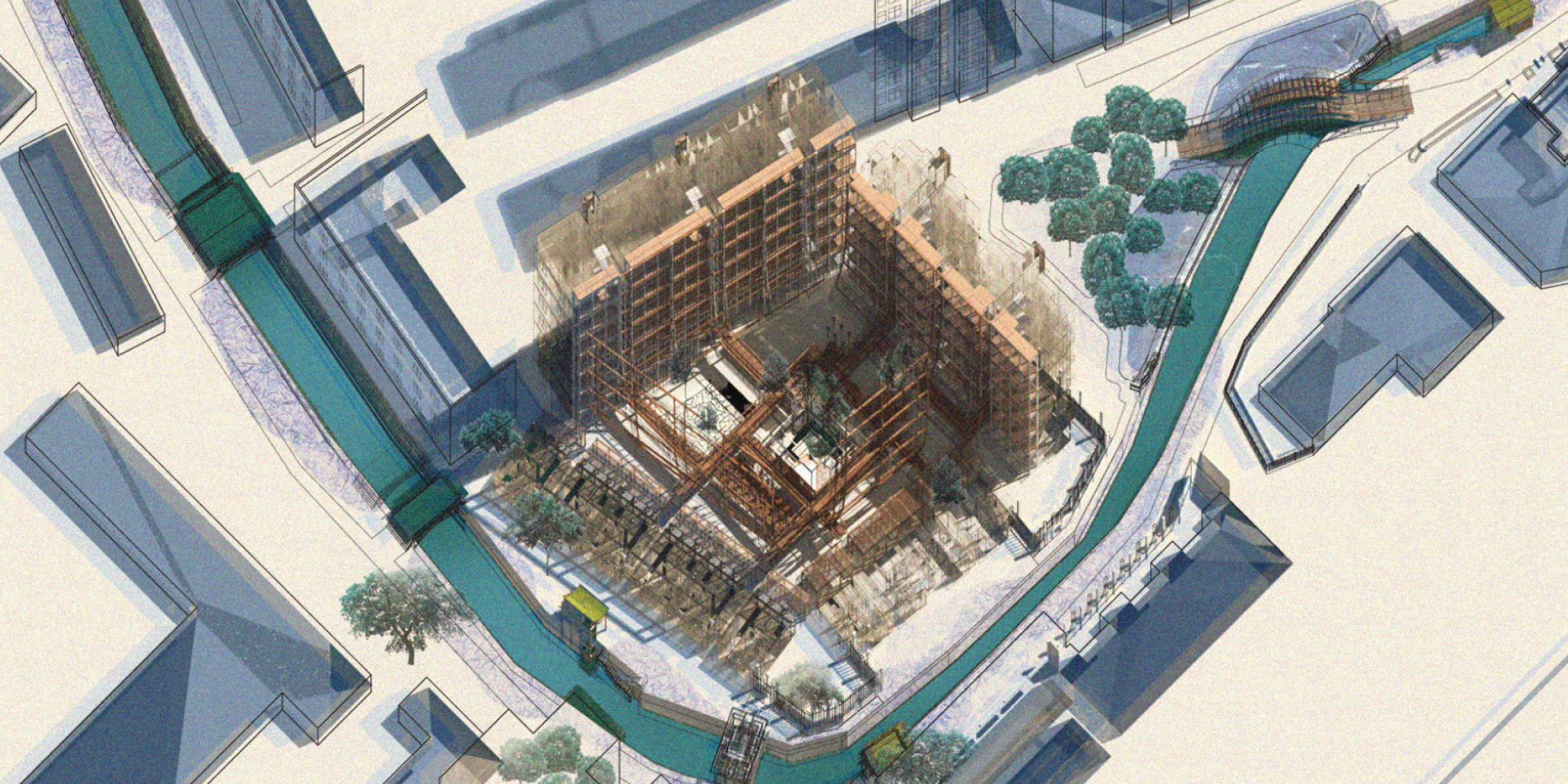
I. The Memory Lattice
A lattice conjuring the traditional practices of family, neighbours, and community through a modern interpretation of courtyards in low-rise housing.
A lattice conjuring the traditional practices of family, neighbours, and community through a modern interpretation of courtyards in low-rise housing.
II. Intergenerational Bridge
Inspired by the tea house bridge, these bridges not only makes two sides of the river more accessible, but also serves their own program for social activities.
Inspired by the tea house bridge, these bridges not only makes two sides of the river more accessible, but also serves their own program for social activities.
III. Decentralized Healthcare
Increase physical accessibility to healthcare facilities for the eldelry. By activating the waterways once more, a network of health clinics can be created, where the doctors from primary hospitals travel to see patients of the neighbourhood.
Increase physical accessibility to healthcare facilities for the eldelry. By activating the waterways once more, a network of health clinics can be created, where the doctors from primary hospitals travel to see patients of the neighbourhood.
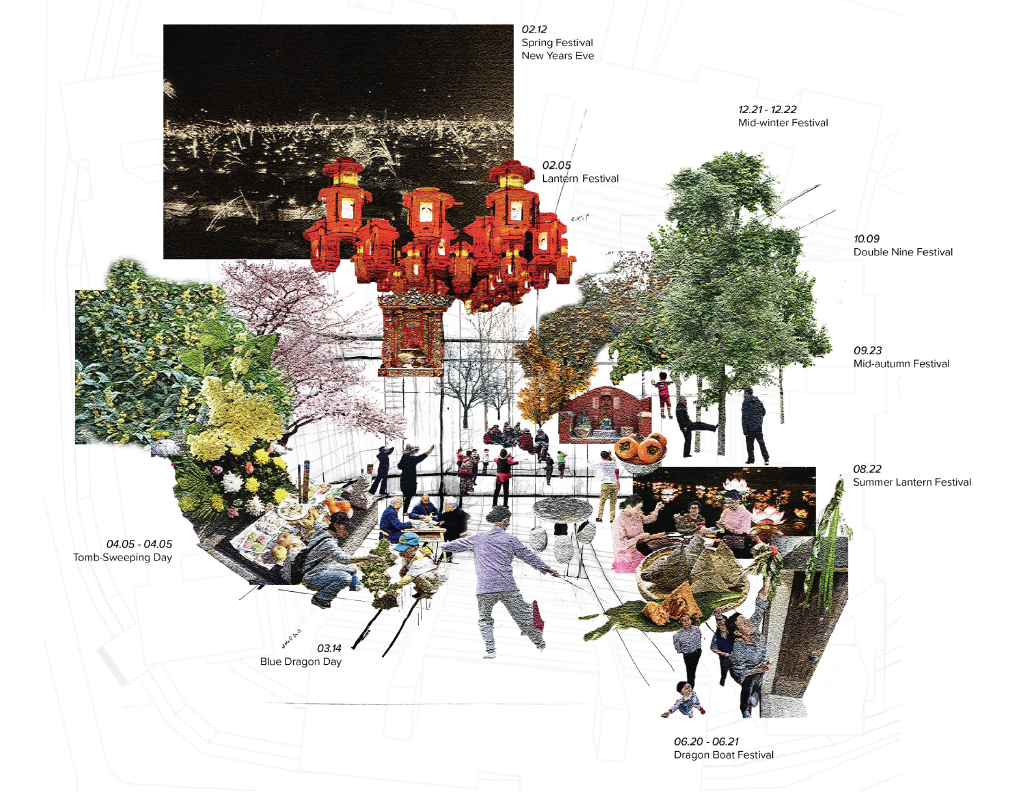

Mapping Courtyard Cultural Activities & Modern Interpretation of Courtyard Lattice Facade
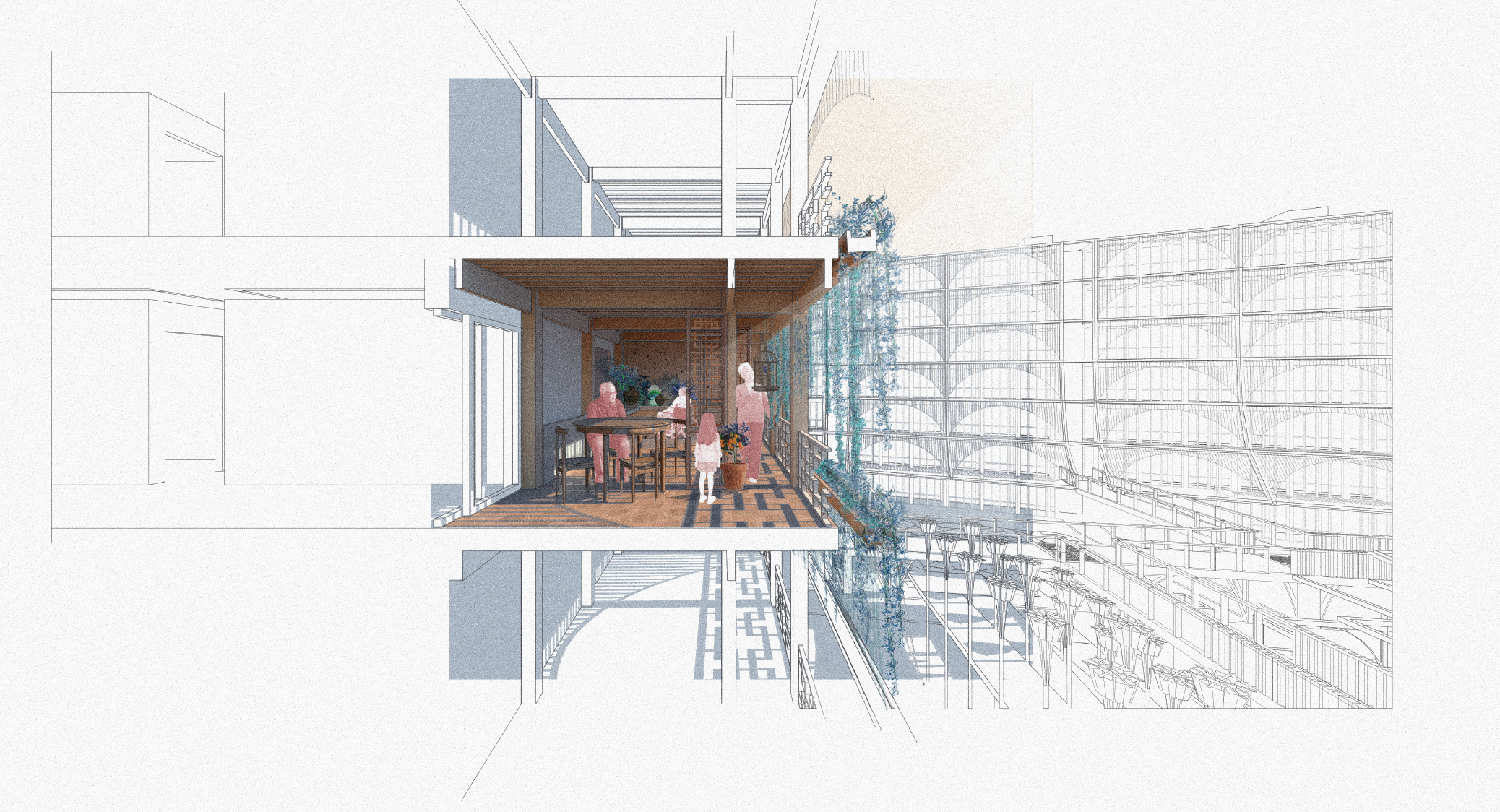

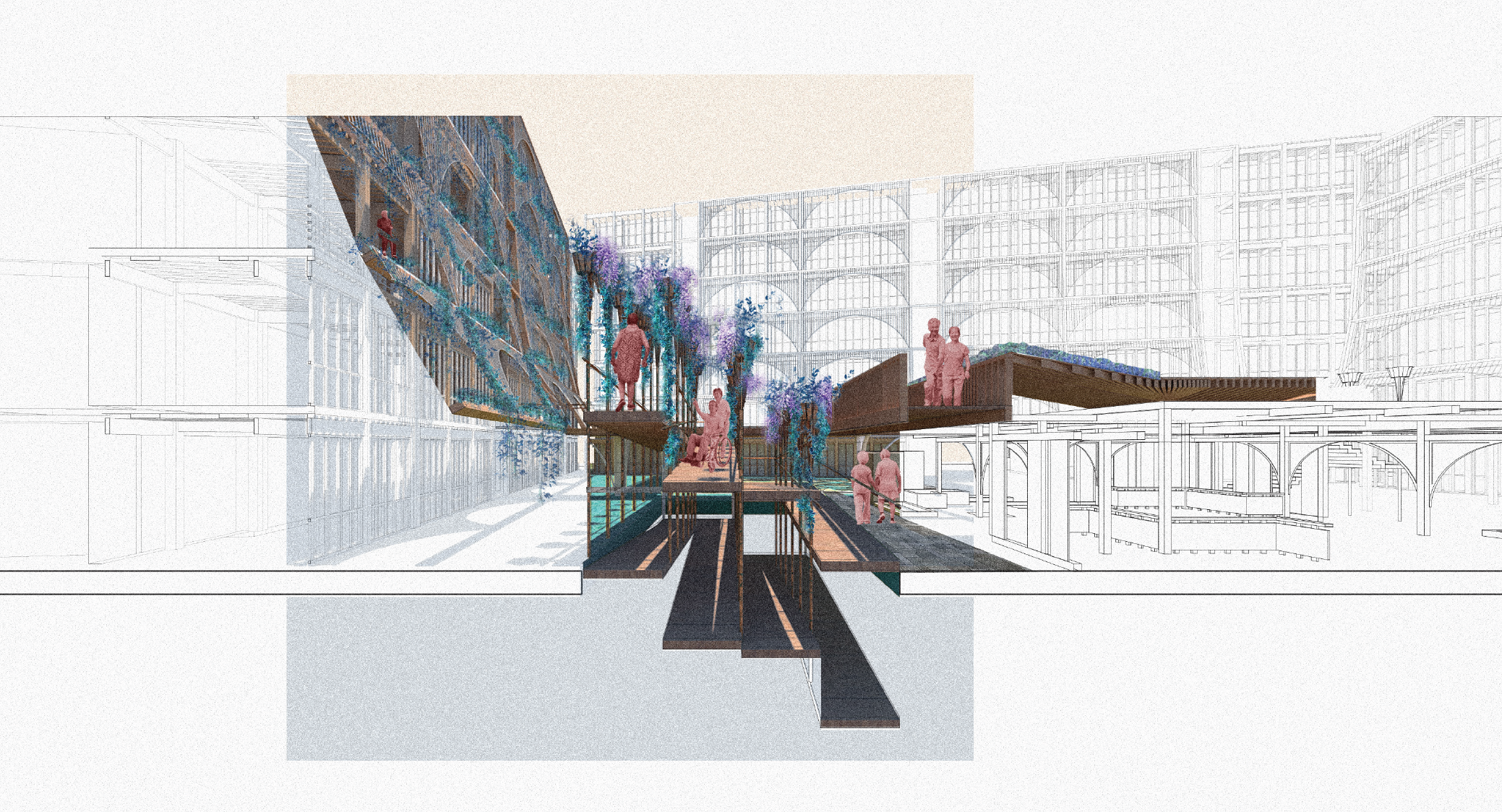
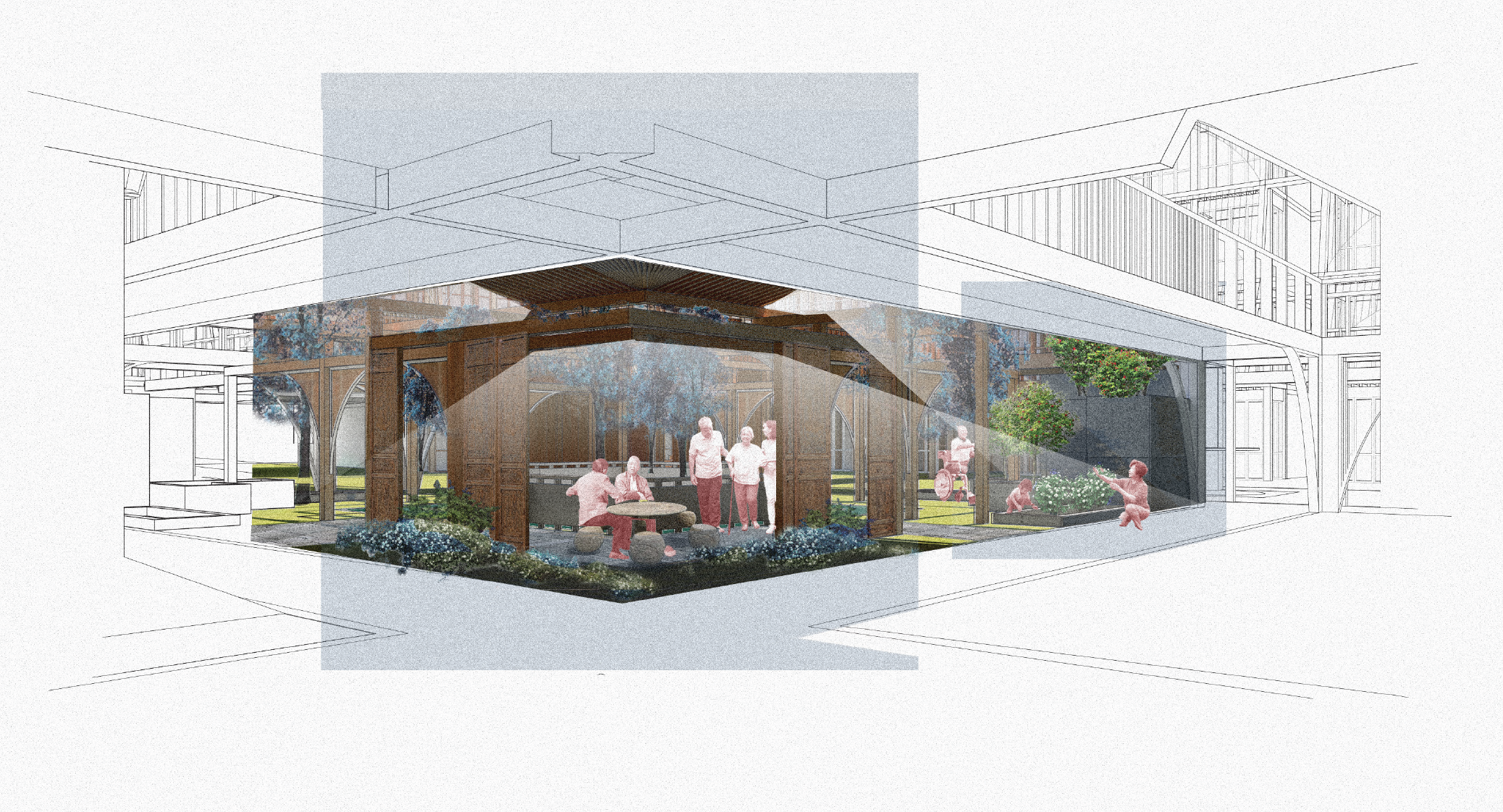
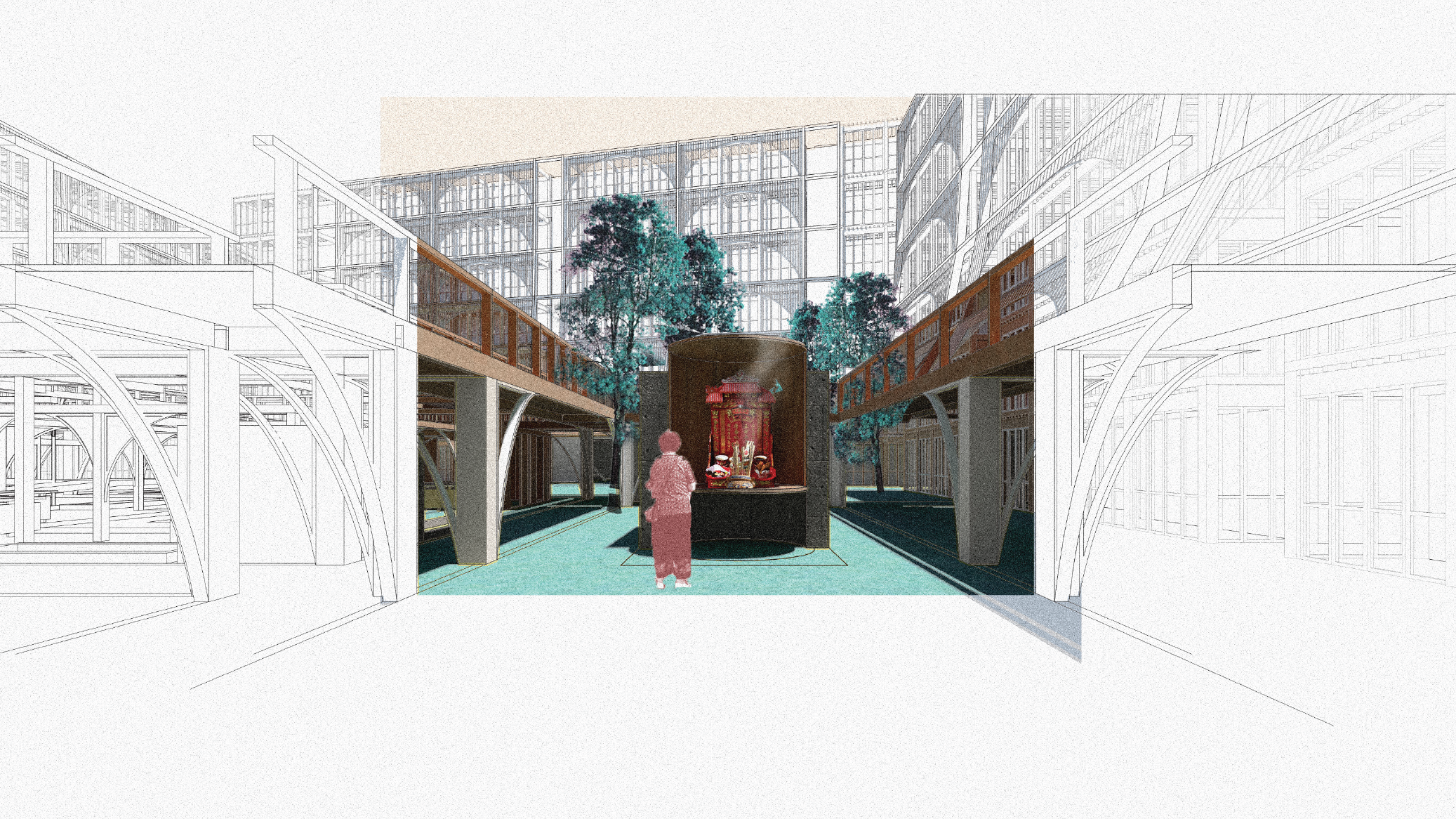
︎ Full Design Section

